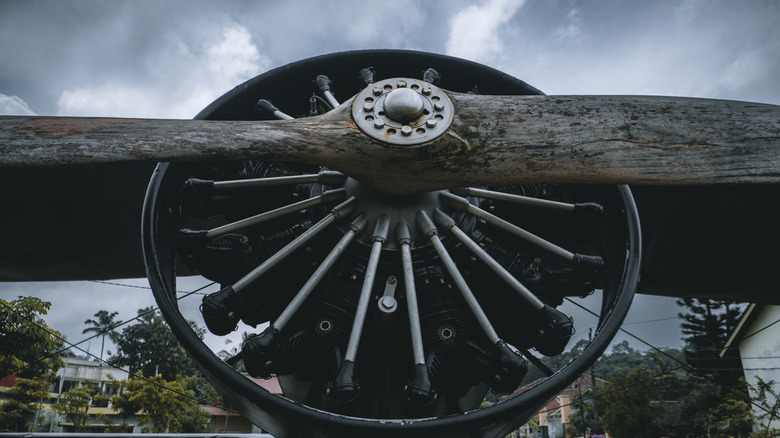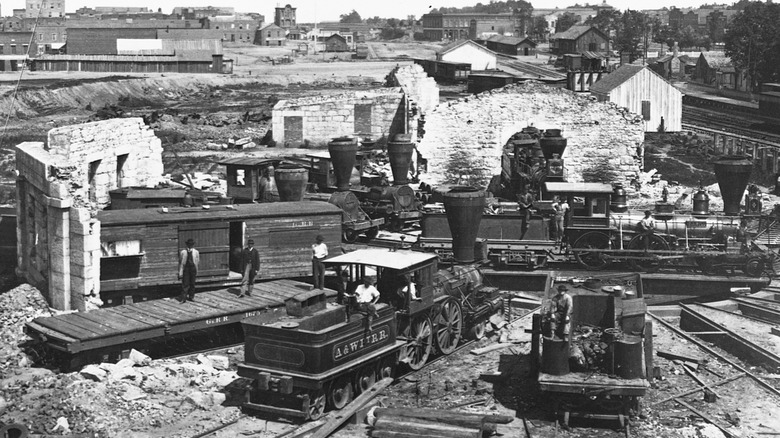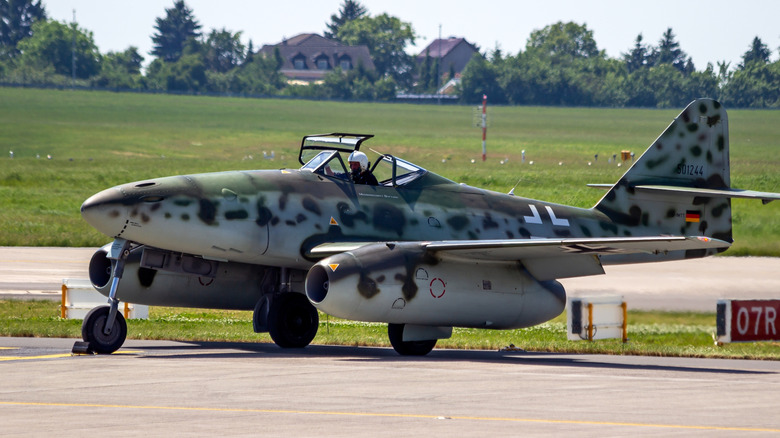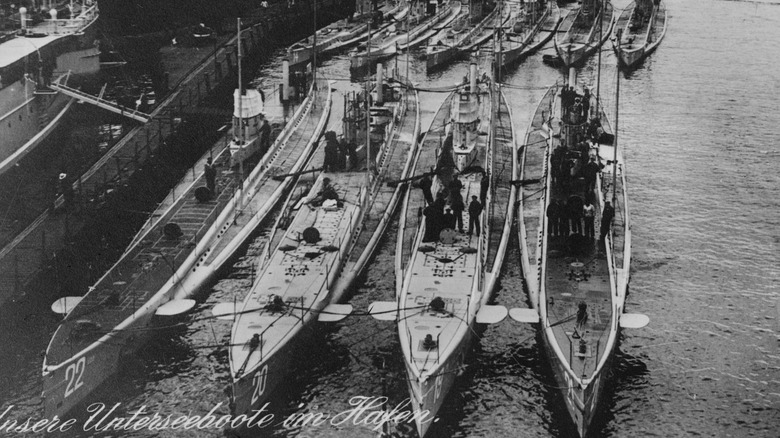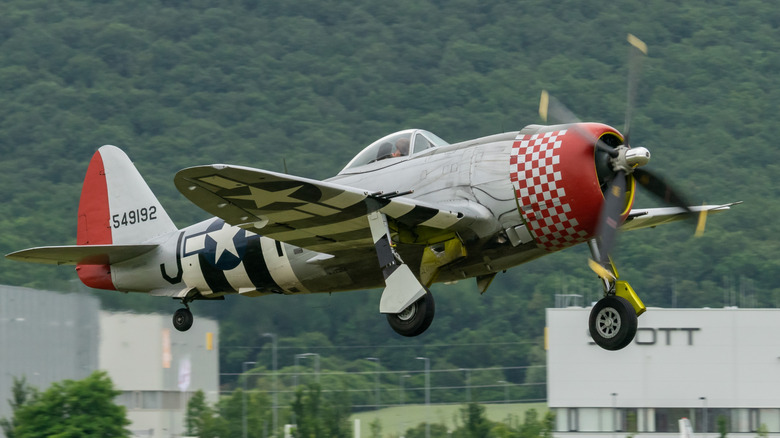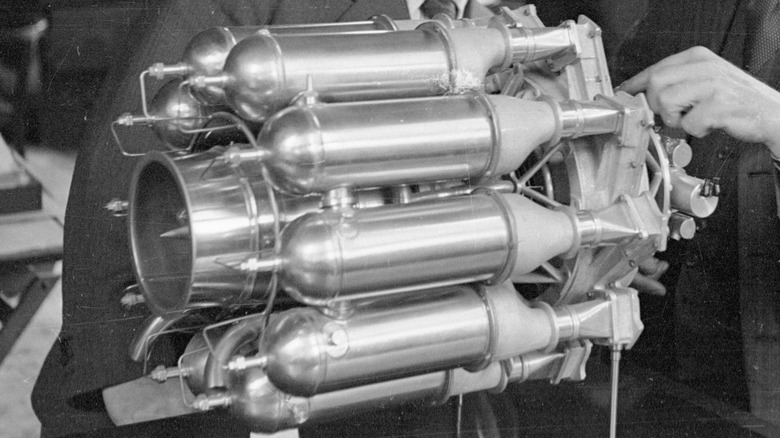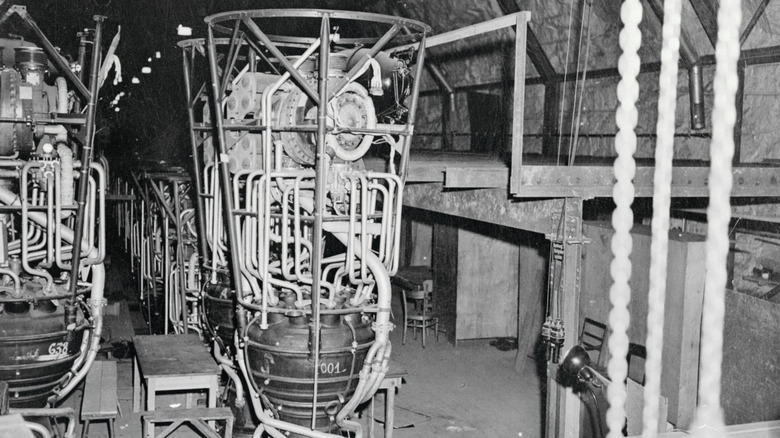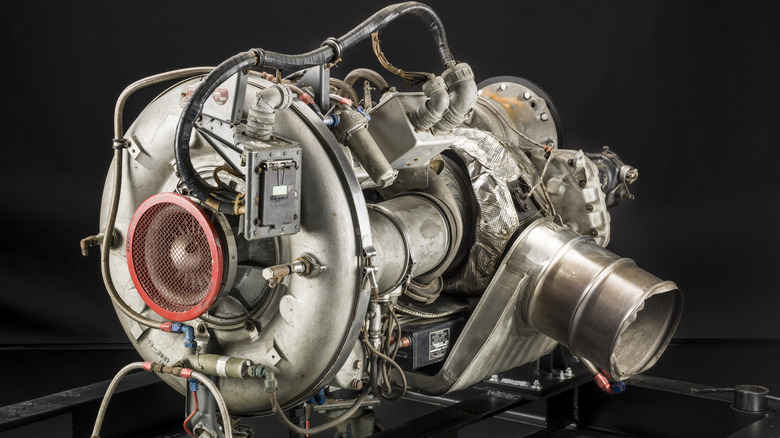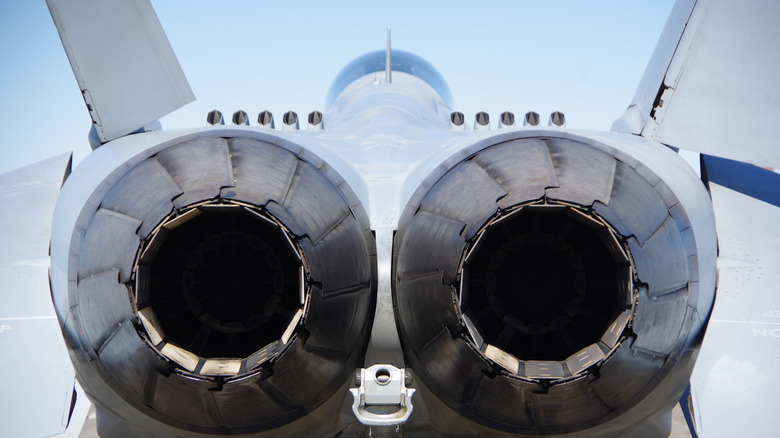Groundbreaking Engines That Changed The Face Of Warfare
There is little doubt that the Industrial Age changed the face of warfare. In a few centuries, battle evolved from cannon and cavalry to blitzkrieg and ballistic missiles. World War I may have been the first thoroughly modern conflict with the birth of the tank, the advent of aviation, and the creation of automatic weapons.
New plays on older technology were part of that change. Gunpowder has been around since at least the ninth century C.E. It reached the Middle East by the 13th century and made its way to warfare around the 14th century. By the 20th century, advances such as rifling, pin-fire cartridges, and repeating weapons changed warfare forever. Yet, it may not have been the evolution of firearms that wrought the most change.
The word engine comes from the Latin root ingenium, which gave birth to the English word ingenious. Before the Industrial Age, the term "engine" applied to things of particular ingenuity, especially physical products such as tools or machines. Medieval warfare relied on examples such as ballistas, trebuchets, and catapults. Some surprising examples came from Leonardo da Vinci's workshop.
As much as siege engines played a part in the eternal wars of the Middle Ages, this article examines the engines of the modern age. These ingenious devices changed not only how humanity lived but also how it fought. We first examine the category of engines that contributed to this monumental change before picking out several specific examples of groundbreaking engines that changed the face of warfare.
Steam engine
Humanity sought to harness steam power as early as 200 B.C.E. Still, it was not until 1712 that Thomas Newcomen's atmospheric engine unlocked the technology that led to the first powered locomotive in 1804. The locomotive revolutionized transportation. By the latter half of the 19th century, rail lines were spreading worldwide.
"An army marches on its stomach" has been attributed to both Napoleon and Frederick the Great. Both commanded armies before the prime age of rail, but the dictum remains true: The better-supplied military is often the victorious one. Napoleon and Frederick relied on horse-drawn wagon trains, but things changed when the American Civil War broke out in 1861.
A frightful war of attrition, the Civil War required a timely resupply of men and materiel. The steam locomotive was so integral to the effort that the Civil War is sometimes called the first railroad war. Every major Civil War battle east of the Mississippi River occurred within 20 miles of a railroad. World War I, which arrived sixty years later, was said by historian AJP Taylor (via National Archives of the U.K.) to have been "imposed on the statesmen of Europe by railway timetables."
Though steam has largely disappeared, it was the first evolutionary change in the fundamentals of battles that used to run on horse or wind power.
Internal combustion
The internal combustion engine, a transformative invention that emerged near the end of the 19th century, revolutionized warfare. Karl Benz's launch of the Motorowagen in 1886, widely recognized as the first viable internal combustion vehicle, was a significant milestone. From being hugely inferior to horsepower at the outset, the internal combustion engine had evolved by the time the Great War broke out in 1914.
The rise of the combustion engine lent itself to a significant expansion of road networks. As war swept across Europe, military operations could be fed by automobiles. No longer did major battles need to occur within miles of a railroad. As long as there was gasoline, supply lines could travel anywhere, as evidenced by a front line that stretched as much as 440 miles at the war's height.
Unlike the cumbersome steam engine tethered to rail lines, internal combustion vehicles were versatile and could travel nearly anywhere. A famous episode in September 1914 saw a fleet of Parisian taxis — mostly Renault AG1 Laundoulets — ferry fighting men to a front line mere miles from Paris. This event, while not a decisive turning point in the war, marked a significant shift in the nature of warfare.
Even more significant than the pluck of French taxi drivers were the machines that emerged as the war raged on. Powered by internal combustion, warplanes took to the skies, tanks first entered battle at the Somme in 1916, and warships sought the enemy on — and under — the sea.
Jet and turbine engines
The internal combustion engine was just the beginning. The jet age was born by the second half of the 20th century. As Nazi Germany crumbled under the dual onslaught of the United States and the U.S.S.R., each victorious side scrambled to make the most of advanced German technology.
Before the close of the war, Germany and Britain had both fielded jet fighters, the Messerschmitt Me-262 and Gloster Meteor, respectively. In the earliest conflict of the Cold War in Korea between 1950 and 1953, jets like the Lockheed P-80 Shooting Star, North American F-86 Sabre, and MiG-15 grappled in the skies in Operation MiG Alley. The nascent Cold War upped the stakes. In a game of global dominance, the Soviets and the Americans fought to develop a technological edge over their opponents. An arms race emerged, and aviation technology was the primary beneficiary.
The war in Korea wasn't just the debut of jet combat but also the setting of the earliest helicopter operations. Powered by conventional piston engines, helicopters like the Bell H-13 Sioux pulled wounded off the battlefield faster than ever. Later, the helicopter would receive a significant upgrade in the form of the turbine engine, expanding the range, power, and capability of a piece of machinery that would become a central core in offensive, defensive, and rescue operations in nearly every theater of war.
Gnome N-9
When it comes to the earliest experimental internal combustion engines, the risk of fire or failure was acceptable — as long as the engine was on the ground. Those that powered aircraft were a different story. Among the revolutionary engines that changed aviation forever, we find the Wright Brothers' 180-pound, 12-horsepower aluminum alloy powerplant. Revolutionary for the time, it was fine for the twelve-second-long first flight of the Wright Flyer, but it wasn't good enough for combat.
The Gnome rotary engine first appeared in 1909. The engine and propellor were attached to each other in rotary aviation engines and rotated around a stationary crankshaft. The turning engine made lefthand banks a breeze, but righthand turns were tricky. Curiously, there was no throttle. Pilots used a blip switch that temporarily cut off the spark to slow the aircraft down. The Gnome covered the pilot with lubrication oil, fuel, and greasy fumes, but it was reliable and robust. It would put a plane in the sky and keep it there until a bullet or pilot brought it to the ground.
Rated at 165 horsepower, the Gnome N-9 and its variants were found in many legendary First World War aircraft. Manufacturers installed it in Sopwiths, Nieuports, and Moranes. While the rotary engine departed aircraft application in the years after the war, the Gnome was responsible for taking warfare into the sky, where it has remained ever since.
U-20 submarine diesel-electric engine
Internal combustion didn't just take combat to the skies but also under the sea. Multiple experiments with steam-powered submarines were conducted at the end of the 19th century. Functional but with serious drawbacks, steam was not suitable for undersea warfare. That honor would go to the diesel-electric engine.
During World War I, the German policy of unrestricted submarine warfare caused so much damage to the Allied cause that it ultimately contributed to the United States joining the war with the sinking of the Lusitania in May 1915. The unterseeboot (under-sea boat, or U-boat for short) responsible was the U-20, which struck the passenger liner with a torpedo.
The U-20's attack was made possible by a 450-horsepower diesel engine mated to electric motors powered by batteries. On the surface, the diesel engine could pull and exhaust air, using the power to turn the screw and charge its batteries. When it submerged, the batteries powered a 160-horsepower electric motor. The boat could travel up to 15.5 knots on the surface and 9.5 knots submerged.
The shift from hand-cranked submarines like the CSS Hunley of the Civil War era to the diesel-electric combination was a monumental leap in naval technology. The effectiveness of this new technology was so profound that it continued to be used in an advanced form in the Second World War, paving the way for the dominance of nuclear-powered submarines in the future.
Armstrong Siddeley Jaguar J-1
The unwieldy rotary engine of the First World War made way for a new setup. By the war's waning days, rotaries began disappearing in favor of radial engines. Both were internal combustion engines, but instead of having a stationary crankshaft around which the engine rotated, radial engines used cylinders arranged around a central hub. As in a traditional engine, the crankshaft in a radial spun as the piston fired. This setup reduced the gyroscopic effect that World War I pilots struggled against in combat.
Air-cooled radials also provided better power for their weight. In 1920, the United States Navy declared it exclusively use air-cooled radials in its plans. Other services soon proclaimed the same. In 1922, the Armstrong Siddely Jaguar J-1, designed by Charles Lawrance, broke records for durability. Its steel-lined aluminum cylinders provided 300 hours of operation at a time when 50 hours was the standard. The lightweight reliability proved perfect for the Navy's need for light and dependable aircraft engines.
Radial engines advanced over the following two decades. Many famous warbirds of the Second World War used radials, including the Focke Wulf Fw 190, Republic P-47 Thunderbolt, and others. As combat often requires the most power, jets replaced radial engines in the post-war years but continued to play a role in civilian and non-combat applications.
Whittle W-series
Piston-driven planes dominated the skies of World War II, both as radials and as inverted V configurations found in the Supermarine Spitfire and Messerschmitt Bf-109. But as powerful as these engines grew by the war's end, they couldn't stand up to the emerging jet age.
The Germans are often credited with innovating jet technology during the Second World War, but development occurred in England as early as 1932. That's when Sir Frank Whittle patented his jet aircraft engine. A turbojet that created as much as 1,240 pounds of thrust via a single-stage compressor, the W.1 had potential, but it would take time to develop. It would be five more years before the Whittle was ready for its first bench test on April 12, 1937. By 1939, the British Air Ministry had contracted an engine to test the new Gloster E.28/39 airframe.
As noted above, the Gloster Meteor achieved operational status before the end of World War II, but it would be by the latter half of the 20th century that jet aircraft played the most significant role. The jet age had well and truly arrived, thanks in part to the Whittle W-series. The Me-262 predated the Meteor by a matter of months. Due to the Germans' desperate use of the 262 in combat, it became more famous than the Meteor.
V-2 rocket engine
Perhaps one of the reasons Germany became known for its propulsion technology was the V-2 missile. Humanity had been experimenting with rocketry as early as 1921 when inventor and physicist Robert H. Goddard envisioned sending the craft into space, but World War II accelerated the science.
At the height of the Second World War, Nazi Germany launched unpiloted V-2 rockets willy-nilly at London with little regard for what they hit. The progenitor of the intercontinental ballistic missile (ICBM), V-2s, used rocket engines for propulsion.
The engine in question was a liquid-fuel rocket that generated up to 56,000 pounds of thrust. Considering that the Whittle jet engine was thrusting in the 1,200-pound range, that was some serious power. After being ignited by a pyrotechnic device, the fuel burned at about 4,900 degrees Fahrenheit until it was exhausted.
The V-2 rocket was not the first experiment with rocketry, but it did showcase its application in warfare. More advanced liquid-fueled rockets are used today in modern ICBMs, capable of carrying out attacks thousands of miles from launch. They are often used in first-stage launch vehicles that send astronauts and satellites into space. While the first space war is yet to break out, satellites have been used exhaustively for communication and intelligence gathering on the battlefield.
Boeing 502
With all this talk of rockets and jet engines, it is easy to forget the turbine, but we won't let that happen. Every jet engine is a type of turbine designed to propel an object by directing thrust power rearwards. Thrust power is the force that propels an object forward, and in the case of a jet, it is created by the rapid expulsion of high-velocity gases. A turboshaft turbine uses the energy it creates to drive machinery.
As mentioned above, early helicopters utilized piston engines, but as the science progressed, things changed thanks to the Kaman K-225. In 1951, a Kaman K-225 helicopter previously fitted with a reciprocating engine received a transplant. The Boeing 502 gas turbine that went into its engine bay made it the first helicopter to fly with a transmission driven by a gas turbine. There were several advantages to turbine power, including lighter weight, increased safety, and higher payload capability.
Helicopters were just the beginning. With turbine engines proving their utility in the air, they began to appear in tanks. One of the first production tanks to use a turbine was the Swedish Strv-103 main battle tank.
Today, America's frontline M1 Abrams main battle tank uses an AGT1500 Gas Turbine Engine developed by Honeywell Aerospace Technologies. The 1500 hp turbine in the M1A2 can propel the 68-ton armored vehicle up to 42 mph up to 265 miles on a single tank of fuel — as long as you're cool with a miles-per-gallon rating of about 0.6 mpg.
General Electric F414
At the height of the jet age, various nations took their own approaches to jet engine technology. Arch ideological enemies, the United States and U.S.S.R., shared almost no technology with each other but didn't mind selling it to allies in the name of global hegemony.
The workhorse jet engine of the era was the General Electric F414. Capable of creating 22,000 pounds of thrust in afterburner, the F414 could be found in the Saab JAS 39 Gripen Ng, a Swedish multirole fighter aircraft known for its advanced technology and maneuverability, and the Boeing F/A-18 Super Hornet, a versatile and reliable American combat jet. A two-shaft turbofan engine, the F414 uses single-crystal turbine blades and a modular design to achieve eyebrow-raising performance in some of the most advanced combat jet aircraft deployed worldwide. In 2024, the United States allowed the first foreign nation to produce the F414 domestically. India plans to use it in its Tejas MK2 fighter jet.
The F414 is just one example of the many jet engines that power our jet-age aircraft. It's a testament to the adaptability of technology, constantly evolving to change the landscape of warfare. As we look to the future, time will tell how far technology can take us. One can only imagine what form the ingenious engine will take in the future.
